I’ve been thinking a lot about probability lately. That’s probability as it pertains to physics, not the likelihood that this post will be read. No, I’ve been thinking about the ‘all histories’ principle or as some call it, Many-Worlds Theory.
The story begins with an explanation of the ‘double slit experiment’. First postulated by English Polymath Thomas Young, the double slit experiment is used to demonstrate and study the wave theory of light[1].
Essentially, a beam of light is aimed at a plate which has two identical vertical slits cut into it. Common sense tells you that light should travel through both slits and should create an image of two slits on the wall behind the plate. However, this is not what happens when you carry out the experiment. Instead of two slits projected beyond the plate, you end up with a classic interference pattern[2], or a band of alternating light and dark lines where intuition says there should be just two lines of light.
Unfortunately, at least for the layman, you need a laser or photon cannon to reproduce these results, but you can see the effect when you shine a cheap laser pointer onto the surface of a CD and let the light reflect onto a nearby wall. All this is caused by the duality of light, this is the idea that light is both a particle and wave at the same time, and it’s a fairly weird thing to get used to.
Modern physicists have advanced the methodology of the double slit experiment and set it up using particle emitters –devices that emit a single particle at a time, rather than a stream of millions- and photosensitive screens that record the impact of each particle. Amazingly enough, the same interference pattern is achieved when the experiment is done this way too. This means that even single particles –photons of light- which should travel through one slit or the other, actually travel through both slits at the same time!
 This curious idea has been the object of much study in the last 100 years, and the obvious question it begs is, can we measure and predict the path a particle will take on its way from the emitter to the screen? What physicists found when they tried to measure the path of the photon, was that the interference pattern disappeared! The act of measuring the particle caused it to travel along a definite path, but more specifically, it caused the particle to behave as a particle, rather than a wave.
This curious idea has been the object of much study in the last 100 years, and the obvious question it begs is, can we measure and predict the path a particle will take on its way from the emitter to the screen? What physicists found when they tried to measure the path of the photon, was that the interference pattern disappeared! The act of measuring the particle caused it to travel along a definite path, but more specifically, it caused the particle to behave as a particle, rather than a wave.
This is a direct demonstration of the idea that the particles emitted exist at all points along the experiment path simultaneously, or in other words, that every particle –not just the ones used in these experiments but all particles in the universe- exist in multiple, if not infinite states of probability, as waves of probability. That is to say that there is an equal probability that the particle can be found at any given point along a continuum at any given time. The effect of measuring the position of the particle is to cause that continuum to collapse into a single reality.

A representation of the Double Slit Experiment
You might be wondering how this relates to ‘all histories” or Many-World theory, and quite simply, both ideas are a common sense extension of the double slit experiment effect.
Both schools of thought suggest that, as all particles hold a potential to be anywhere at any time, all states of matter all possible histories and futures exist all at once. This is not a new idea -in fact the Many-World Interpretation was first postulated by Hugh Everett in 1957- but my thoughts have been gravitating toward it for some time nonetheless.
What’s attractive to me, intellectually speaking, is the idea that in all the chaos of the universe the element that brings coherence to reality is consciousness. I realise that this may be a stretch, but some thought may bring you around to my side.
There are many ways to measure the attributes of a system, such as the universe, but the one constant in all measurement is the observer. In fact that is the definition of measurement in terms of quantum mechanics, a sampling of variables by the senses of an observer.
Think of a circle with lines drawn through it in such a way so that all of the lines connect perfectly in the absolute centre of the circle. Envision that all of the lines on the left side of the circle are paths into the present, and all of the lines on the right side of the circle represent pathways into the future.
The circle represents a model of existence, permeated with potential timelines. In the past there are an infinite number of histories –or paths into the present, some are more likely to be realised than others, but only one is the actual history of the present. Extending into the future there are an equal number of choices –or paths out of the present. Again, some are more likely to be realised, but only one will prevail and become reality. The possibilities begin spread out, then they converge into a single reality at the present and again spread out as time moves forward, and it’s no coincidence that all of the possible paths converge at the present…at the observer. It is the observer who collapses the entire field of possibilities into a single path.
Essentially, what I’m saying is that our consciousness is the defining element of reality. You’ve all heard of Philosopher George Berkely’s most famous thought experiment; if a tree falls in the forest and no being is there to hear it, does it make a sound? That same sentiment is reflected in renowned physicist Erwin Schrodinger’s “cat” thought experiment[3]; wherein a cat is placed inside a box with a vial of poison and a mechanism for breaking the vial at random. Once the box is closed, since one cannot know if the poison has been released or not, the cat must exist as both a live cat and a dead cat. It is only upon the opening of the box that our observation causes the cat to be either dead or alive.
The morbid nature of the thought experiment notwithstanding, the basic punch line is that the particles that make up the atoms that make up the cells that make up the cat exist as a wave of probability and it is our observation of their position etc that causes that wave to collapse into a solid state of reality. But the experiment goes further than that, it says that both states are a reality, and this means that all realities exists simultaneously. All particles exist at all points along the continuum, and therefore all histories must exist.
I realise that this is difficult to understand, and I also realise, all too well, that my explanation of the concept leaves something to be desired. Nonetheless, my own mind wrestles with the idea that every history that could ever exist does exist, and since we’re talking about particles, particles that permeate the entire universe, every possible history (and future for that matter) in the entire universe also exists simultaneously. There are infinite worlds in infinite galaxies in infinite universes. And there are infinite you’s and me’s in infinite states, in all those worlds, galaxies and universes.
It’s a big idea that is born of such a simple idea, consciousness is the one element of our universe that has the power to snap particles into place, to form a coherent reality in the present. When you combine this with such ideas as akashic records and even presentiment effect, you end up with some mind blowing conclusions. But I digress and I leave you to ponder the consequences of the above discussion on your own.
[1] See Young’s Experiment via Wikipedia
[2] An interference pattern is the result of combining two superposed waves with similar or the same frequency that come together and reinforce each other. When combined the two waves create a completely new wave that will present the pattern of interference referred to above.
[3] Widely known as “Schrodinger’s Cat”


 There’s a new menace in the sky these days, and considering the state of the old menaces, you’d think this would be a big headline. There are a lot of things floating above our heads at any given time; airplanes – both commercial and military – drones, birds, even
There’s a new menace in the sky these days, and considering the state of the old menaces, you’d think this would be a big headline. There are a lot of things floating above our heads at any given time; airplanes – both commercial and military – drones, birds, even 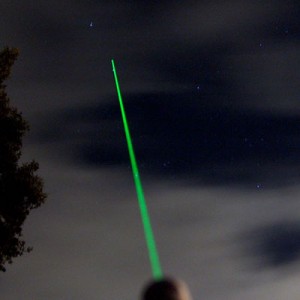 On January 7th 2014, Australian UFOlogist Alan Ferguson posted a video to his website wherein a fellow UFO enthusiast, Peter Slattery, used a consumer grade laser pointer to “power up” an unidentified object in the sky over Albury, Australia.
On January 7th 2014, Australian UFOlogist Alan Ferguson posted a video to his website wherein a fellow UFO enthusiast, Peter Slattery, used a consumer grade laser pointer to “power up” an unidentified object in the sky over Albury, Australia. Laser pointers, like any laser, use electricity to generate a coherent beam of light. In the case of consumer grade pointing devices, they have limited power. In the US such lasers are limited to 5mW of power, while in the UK, Australia and some other countries they’re limited to 1mW by law. As a result of this low power, the average laser pointer is extremely unlikely to do direct harm to an aircraft or to affect its operation in any way, except if the beam happens to penetrate the cockpit and temporarily blind the pilot.
Laser pointers, like any laser, use electricity to generate a coherent beam of light. In the case of consumer grade pointing devices, they have limited power. In the US such lasers are limited to 5mW of power, while in the UK, Australia and some other countries they’re limited to 1mW by law. As a result of this low power, the average laser pointer is extremely unlikely to do direct harm to an aircraft or to affect its operation in any way, except if the beam happens to penetrate the cockpit and temporarily blind the pilot. As mentioned, lasers are coherent beams of light, or electromagnetic radiation. This means that they emit photons in a straight, tightly packed beam. This cohesion gives the beams the ability to travel large distances without losing appreciable amounts of energy. But they don’t travel forever.
As mentioned, lasers are coherent beams of light, or electromagnetic radiation. This means that they emit photons in a straight, tightly packed beam. This cohesion gives the beams the ability to travel large distances without losing appreciable amounts of energy. But they don’t travel forever.
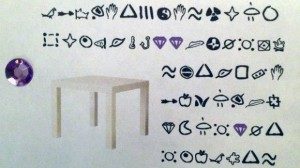







 What really do we know about this character, Satan, whether by another name or face?
What really do we know about this character, Satan, whether by another name or face?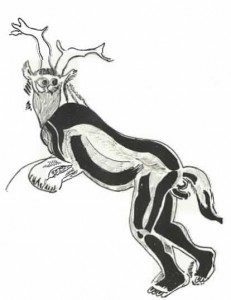
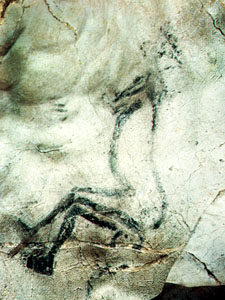
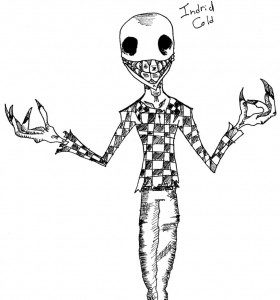 For at least six months I have been studying everything I can find dealing with the Point Pleasant Mothman case for a project I’m working on. I read John Keel’s “The Mothman prophecies” years ago and thought I had a good understanding of the story, but there is much more to the Mothman mythos than just the Keel book, and there are many questions and misunderstandings. One of these issues involves the connection between the so-called “Grinning Man”, and the strange man who seemed to come from nowhere, “Indrid Cold”.
For at least six months I have been studying everything I can find dealing with the Point Pleasant Mothman case for a project I’m working on. I read John Keel’s “The Mothman prophecies” years ago and thought I had a good understanding of the story, but there is much more to the Mothman mythos than just the Keel book, and there are many questions and misunderstandings. One of these issues involves the connection between the so-called “Grinning Man”, and the strange man who seemed to come from nowhere, “Indrid Cold”.

 HAARP, as I’ve previously written, is based in Gakona, Alaska and is funded by The US Air Force, the US Navy, the University of Alaska and the Defense Advanced Research Projects Agency (or DARPA, which, I might add, garners its own fair share of conspiracy attention). HAARP’s official function is to analyze the ionosphere and investigate the potential for developing ionospheric enhancement technology for radio communications and surveillance.
HAARP, as I’ve previously written, is based in Gakona, Alaska and is funded by The US Air Force, the US Navy, the University of Alaska and the Defense Advanced Research Projects Agency (or DARPA, which, I might add, garners its own fair share of conspiracy attention). HAARP’s official function is to analyze the ionosphere and investigate the potential for developing ionospheric enhancement technology for radio communications and surveillance. A time portal, an inter-dimensional rift, a spiritual mecca; what exactly is the purpose of this strange collection of standing stones in the English county of Wiltshire?
A time portal, an inter-dimensional rift, a spiritual mecca; what exactly is the purpose of this strange collection of standing stones in the English county of Wiltshire?
